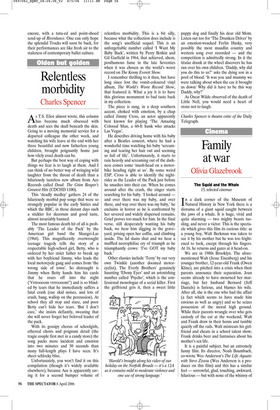Homage to a bygone era
Giannandrea Poesio
English National Ballet Richmond Theatre Les Ballets Trockadero de Monte Carlo Peacock Theatre Last week I briefly lamented the lack of stylistic and historical awareness that informs most contemporary productions of the classics. I had not yet seen English National Ballet’s new composite programme, though. Presented as part of Richmond Theatre’s Leap into Dance 2006 programme, this quadruple bill stands out for attention to detail, stylistic accuracy and utter brilliance.
As I reported in that same review, the Pas de Quatre is a divertissement created in 1845 to display the bravura of four famous ballerinas of the Romantic era. The ballet, after a brief run of performances and myriad imitations, was then revived a few times, with different degrees of success, in the 20th century. In each instance, lack of substantial source material led to the creation of totally new choreography, which strove to evoke the style of the period as well as the individual skills of each dancer. One of the most famous ‘new’ versions, and the latest in the ballet’s chronology, was the one signed by Anton Dolin, one of the 20th century’s most celebrated male ballet stars and an artistically attentive ballet master. His recreation of the 1845 work drew upon his sound knowledge and personal reading of the Romantic formulae, even though, in the light of a more recent and more historically documented ballet historiography, his Pas de Quatre presents today a number of technical and stylistic incongruities. Yet it remains a splendidly vibrant piece of theatre dance, a work that still manages to open a window on a bygone era in which ballet stars were so important that their rivalry sparked parliamentary debates at least according to anecdotal ballet history. The four artists I saw, Elena Glurdjidze, Begoiia Cao, Fernanda Oliveira and Adela Ramirez, were absolutely perfect as the Romantic celebrities Marie Taglioni, Fanny Cerrito, Carlotta Grisi and Lucile Grahn, even though I would have liked to know from the programme who was who. Each dancer displayed a deep understanding of the stylistic nuances recreated by Dolin, and all of them dealt impeccably with the Romantic mannerism of the parts, without ever looking twee or ridiculously anachronistic which is what the hilarious performance of the Trocks had built on the previous week.
Their performance was aptly matched by Variations for Four, another divertissement conceived by Dolin for four men as a response to the Romantic celebration of the ballerina’s art. Although Dmitri Gruzdyev, Yat-Set Chang, Yosvani Ramos and Fabian Reimair were not as technically tidy as their female counterparts, their performances stood out for panache and stylistic understanding, and highlighted brilliantly the essence of Dolin’s 1957 choreographic inventions, impeccably restaged, as for the Pas de Quatre, by Jelko Yuresha. The programme started with the visually stunning Perpetuum Mobile, a 1997 work by Christopher Hampson to music by Bach, and concluded with a fizzy staging of George Balanchine’s Who Cares?, in which the ballet idiom complements splendidly George Gershwin’s immortal tunes. Although constrained by the limited space of the Richmond stage, the dancers were utterly superb.
Earlier in the week I went back to the Peacock Theatre to see the second programme of Les Ballets Trockadero de Monte Carlo. And once again I found myself choking with laughter. The programme, which was as good as the first one, started with Les Sylphides, in which the Trocks displayed witty knowledge of the various accidents that can occur while dancing Fokine’s immortal choreography — on a couple of occasions I’ve witnessed some of those accidents happen. But one of the best numbers of the evening was, in my view, the Flames of Paris pas de deux. Derived from an early Soviet ballet, this duet highlighted with unique humour all the stylistic idiosyncrasies of the Soviet style while displaying, at the same time, the unique technical talents of the dancers. The evening included the utterly hilarious Dying Swan — performed by a different male ballerina from the one seen in the first programme — a splendid and stylistically accurate send-up of Balanchine’s Concerto Barocco, entitled Go for Barocco, and Raymonda’s Wedding, from the 1898 classic Raymonda. Not unlike the Paquita seen in the first programme, this Raymonda is a pyrotechnical display of technical and comic bravura, which concludes, as an encore, with a tutu-ed and point-shoed send-up of Riverdance. One can only hope the splendid Trocks will soon be back, for their performances are like fresh air to the staleness of contemporary ballet culture.











































































 Previous page
Previous page